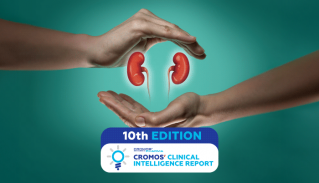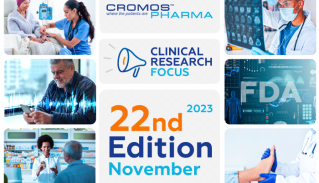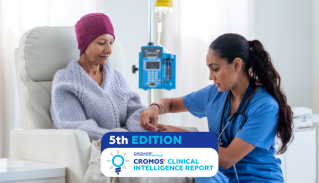
Cromos Pharma on clinical trial trends for 2022
2021 was a year of recalibration for the clinical trials industry as it began to recover from the impact of the COVID-19 pandemic. Although challenges remain with the emergence of new waves and variants, the adaptions the industry made during the peak of the pandemic have had a positive impact allowing the drug trials sector to rebound. What can we expect for 2022? Cromos Pharma looks at the key trends for the year ahead.
Positive outlook as clinical trials sector rebounds
Overall, the outlook for 2022 is positive with strong signs that the number of new clinical trial starts in a range of therapeutic areas will continue to increase. It is likely that 2022 will see further adoption of mechanisms used to deal with the pandemic including increased uptake of digital technologies, decentralized clinical trials (DCTs) and greater use of real world data (RWD).
DCTs set to stay
DCTs are on the increase and look set to stay well beyond the pandemic. A report from GlobalData (December 2021) estimated that a “record number of around 1,300 trials with a decentralised and/or virtual component will likely initiate in 2022, representing a 28% increase from 2021”. Furthermore, the benefits of DCTs are being recognized across the sector including shortening of study timelines, lower regulatory costs and greater flexibility for protocol changes.
In addition, DCTs can help reduce patient burden in clinical trials and increase patient engagement. Decentralized solutions such as the use of digital screening of patients, eConsent, and remote patient participation can effectively reduce the number of site visits required. Digital tools also allow for continuous collection of study data and allow patients to record side effects or symptoms in real time.
More and better real world data
Greater adoption of digital tools in clinical studies is in turn increasing the amount of real world data available. Greater use of algorithms allowing for deep mining of these datasets will help address key challenges associated with patient recruitment allowing access for hard to reach patients. Greater use of RWD will also help generate real world evidence (RWE)to providing useful information that complements clinical trial findings and creates a better understanding of how treatments are used in real world medical settings. A recent Deloitte report argued that those involved in drug development should “convene RWD ecosystems to better understand disease, inform patient-centric protocol design, and expand the use of real-world evidence (RWE) in regulatory submissions.”
Sharpening focus on patient centricity
As trends towards decentralized clinical trials and use of digital tools increase so too will demands to ensure patients benefit from these innovations. Undoubtedly, leveraging digital technologies is a vital part of delivering on the promise of patient centricity. These tools allow for the clinical trial to be brought directly to the patient and play an important part in reducing the burden of participation. Digital technologies can also be used to improve the patient experience in other ways for example simplifying and making the informed consent process better. Use of novel clinical trial tools to expand access to clinical trials also creates opportunities for greater patient diversity in studies.
As Cromos Pharma looks forward to another year delivering clinical trial success, we are focused on keeping up to date with the latest trends and also continuously improving our service offerings to our clients.






























